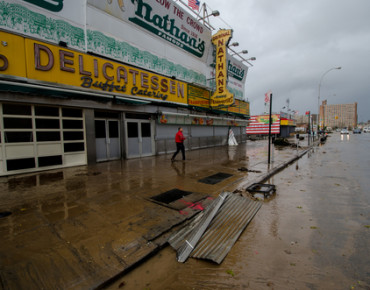Does Your Business Continuity Plan Include Your Employees?

Laurence Guihard-Joly
With hurricane season upon us, state and federal agencies are teaming up to prepare for worst-case scenarios. But what about you?
If a sudden disruption threatens your organization's continuous operations, you may already have a disaster recovery plan in place and, if not, you will have at least thought about how to maintain operations. But even if your facilities and IT systems are safe, what about the most critical component: your employees? Have you figured out how you will track the well being of your workforce during a disruption and what resources you will provide? Have you identified critical skills and provided cross training for crucial roles? Does your business continuity plan consider the crisis plans of the local communities where your facilities and employees are located?
The Atlantic hurricane season runs from June 1 to November 30, with the peak period from early August through the end of October and though this year’s initial hurricane outlook calls for a calm season, it only takes one storm impacting your area to make it a bad year. When Superstorm Sandy hit the northeast a little more than two years ago, it caused widespread flooding and power outages. The storm disrupted the functioning of 25 percent of cell towers in the affected area and prompted the New York Stock Exchange to close for two days due to a weather-related event – the first time in 30 years. With the estimated damage exceeding $50 billion, Sandy damaged or destroyed at least 650,000 houses and left approximately 8.5 million customers without power during and after the storm. Many areas of Northern New Jersey, New York City, and Long Island are still recovering from the destruction.
Although your initial focus may be getting your workforce back online and being productive, the effects of some events are often personal and could extend from school or day care closings to general shock, loss of a loved one, or a home being destroyed. In severe crises, employees may be uncertain if they will be able return to work at all.
Especially during a calamitous event, your business continuity strategy must factor in the emotional and physical impact on your workforce. In general, plan to provide critical support services, or at least have resources at your fingertips, for services that can include:
- Healthcare and crisis intervention services
- Transportation
- Repair services
- Temporary housing
- Child-care accommodations
- Financial assistance and incentives like bonuses after completion of projects
- Communication services (including mobile, satellite, phones)
Your continuity strategy must also consider the crisis plans of the local communities where your facilities and employees reside. Contingency plans for your workers’ safety and return to normalcy might mean being prepared to transport them to a shelter or provide alternate accommodations for those displaced from their homes, including pets.
Care should be taken to also plan to support members of your workforce with special needs. Even if employees are able and willing to work through a disaster, they simply may not be able to get to their office, store, or warehouse. Public transportation systems may be disrupted or travel restrictions could be in force. Even smaller-scale disruptions, such as transit strikes and blizzards, can significantly impact employees’ ability to get to work.
With civil unrest, terrorism, or natural disasters, the ability of your workforce to maintain business operations can hinge on your ability to account for their safety. For some industrial enterprises, such as power and manufacturing plants, contingencies for safe evacuation are essential. Innovative use of technologies such as radio frequency identification can help track
workers and visitors by their ID badges, and account for their safety – even easing collaboration with first responders from local authorities. Your lead decision maker should determine contingencies based on the local effect and adjust the plan accordingly.
In addition to these immediate contingencies, your business continuity strategy should incorporate cross training of your workers in emergency and business-critical processes. For example, if you form a team of workers to be your first phase of recovery following a disruption, plan for members of that team to operate in shifts to allow them to recuperate, providing a steady stream of alert minds. It is imperative to build flexibility into your plan for maintaining continuity of critical skills because the makeup of your workforce can change rapidly; remember, some people with key skills may not be available when you need them most if they are stranded or homeless.
From the obvious requirement of workers being able to resume their jobs, to their important everyday needs of food and shelter, and ensuring the safety and security of their families, you must factor many components into your organization’s plan. If you take steps to manage these considerations to meet these fundamental needs and ensure the well-being of your employees, they will be better equipped to get your business back up and running following a crisis. Planning is essential and education, training, and testing are critical. A well-defined and executed communication plan, for all employees, before, during, and after a disaster or a disruption is key to staying calm in the eye of the literal or metaphoric storm.
About the Author:
Laurence Guihard-Joly is general manager of Resiliency Services for IBM. Follow her team on Twitter at: @ibmresiliency
Related
Managing editor of Enterprise Technology. I've been covering tech and business for many years, for publications such as InformationWeek, Baseline Magazine, and Florida Today. A native Brit and longtime Yankees fan, I live with my husband, daughter, and two cats on the Space Coast in Florida.












